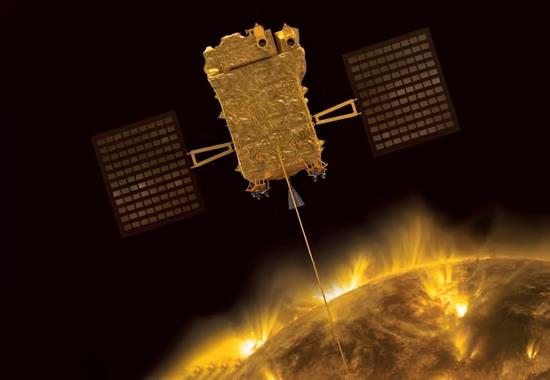After the success of Chandrayaan 3, the Indian Space Research Organization (ISRO) on Monday announced the launch date of its much-awaited & historic space observatory mission named Aditya-L1. ISRO on its official X (Twitter) handle announced that Aditya-L1 will be launched on September 2, 2023, at around 11:50 AM from Sriharikota. Not only this, ISRO also shared a registration link under which citizens interested in witnessing ISRO's other historic rocket launch from Sriharikota's Launch View Gallery. Notably, ISRO has been receiving massive global praise for making India the first country in the world to land on the 'unexplored' South Pole of the moon. Notably, ISRO's Chandrayaan 3 was a major success when it achieved a soft landing on the South Pole of the moon. After Chandrayaan 3's successful landing, Prime Minister Narendra Modi announced that India will soon approach to its maiden voyage to the Sun. In fact, PM Modi announced that August 23 will be marked as 'National Space Day' to commemorate the successful soft landing of Chandrayaan 3. Now, it's time to move on from Chandryaan 3 as ISRO has announced Aditya-L1 launch date. Now, the question arises what is ISRO's Aditya-L1 and what its objectives? To know the answer continue reading-
What is ISRO's Aditya-L1 mission?
As per ISRO, Aditya-L1 will be India's first space-based mission to study the sun which is the ultimate source of energy and light. Aditya L1 will be placed in a halo orbit around the Lagrange point 1 (L1) of the Sun-Earth system, which is about 1.5 million km from the Earth. A satellite placed in the halo orbit around the L1 point has the major advantage of continuously viewing the Sun without any occultation or eclipses.As per ISRO, this will provide a greater advantage of observing solar activities and their effect on space weather in real time. The spacecraft will carry seven payloads to observe the photosphere, chromosphere and the outermost layers of the Sun (the corona) using electromagnetic particle and magnetic field detectors. Using the special vantage point L1, four payloads directly view the Sun and the remaining three payloads carry out in-situ studies of particles and fields at the Lagrange point L1, thus providing important scientific studies of the propagatory effect of solar dynamics in the interplanetary medium.
ISRO in its official release stated that Aditya L1 payloads are expected to provide the most crucial information to understand the problem of coronal heating, coronal mass ejection, pre-flare and flare activities, and their characteristics, dynamics of space weather, propagation of particle and fields etc.
What are the objectives of Aditya L1?
As per ISRO, the main objectives of Aditya L1 are-
1) Study of Solar upper atmospheric (chromosphere and corona) dynamics.
2) Study of chromospheric and coronal heating, physics of the partially ionized plasma, initiation of the coronal mass ejections, and flares
3) Observe the in-situ particle and plasma environment providing data for the study of particle dynamics from the Sun.
4) Physics of solar corona and its heating mechanism.
5) Diagnostics of the coronal and coronal loops plasma: Temperature, velocity, and density.
6) Development, dynamics, and origin of CMEs.
7) Identify the sequence of processes that occur at multiple layers (chromosphere, base, and extended corona) which eventually leads to solar eruptive events.
8) Magnetic field topology and magnetic field measurements in the solar corona.
9) Drivers for space weather (origin, composition, and dynamics of solar wind.)
What are the payloads in Aditya L1?
ISRO in its release informed that there are a total of seven payloads on-board with four of them carrying out remote sensing of the Sun and three of them carrying in-situ observation. Visible Emission Line Coronagraph(VELC) which is capable of Corona/Imaging & Spectroscopy. The second one being is Solar Ultraviolet Imaging Telescope (SUIT), capable of Photosphere and Chromosphere Imaging- Narrow and broadband. The third one being is Solar Low Energy X-ray Spectrometer (SoLEXS), which is capable of Soft X-ray spectrometer: Sun-as-a-star observation. The fourth one being is High Energy L1 Orbiting X-ray Spectrometer(HEL1OS) which is capable of Hard X-ray spectrometer: Sun-as-a-star observation. The fifth one being is Aditya Solar wind Particle Experiment(ASPEX) which is capable of Solar wind/Particle Analyzer Protons and heavier Ions with directions. The sixth one being is Plasma Analyser Package For Aditya (PAPA) which is capable of Solar wind/Particle Analyzer Electrons & Heavier Ions with directions and last but not least is Advanced Tri-axial High Resolution Digital Magnetometers capable of in-situ magnetic field (Bx, By and Bz).
Graphical representation of ISRO 's Aditya L1 mission
🚀PSLV-C57/🛰️Aditya-L1 Mission:
— ISRO (@isro) August 28, 2023
The launch of Aditya-L1,
the first space-based Indian observatory to study the Sun ☀️, is scheduled for
🗓️September 2, 2023, at
🕛11:50 Hrs. IST from Sriharikota.
Citizens are invited to witness the launch from the Launch View Gallery at… pic.twitter.com/bjhM5mZNrx
